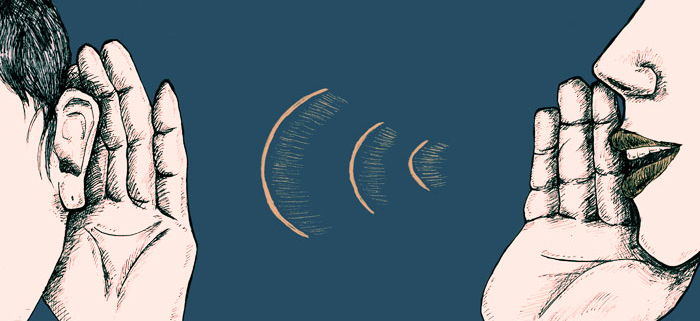The four basic types of hearing loss
Hearing loss isn’t a one-size-fits-all kind of deal. There are different types of hearing loss, each with their own symptoms, causes and treatments.
Hearing loss can affect anyone at any time, by a variety of things, and can affect people of all ages.
Here are the four basic types of hearing loss, each with their own nuances and impacts.
Sensorineural Hearing Loss
This is one of the most common types of hearing loss, occurring when the inner ear or the actual hearing nerve itself becomes damaged.
Sensorineural loss generally occurs when some of the hair cells within the cochlea are damaged, and can be a result of aging, exposure to loud noise, injury, disease, certain drugs or an inherited condition.
Unfortunately, sensorineural hearing loss is typically not medically or surgically treatable, although hear aids do tend to help a lot of sufferers.
Conductive Hearing Loss
Conductive hearing loss happens in the outer or middle ear, usually due to a blockage by earwax or a foreign body.
When the middle ear is blocked, sound waves can’t carry the information all the way through to the inner ear, resulting in hearing loss.
Fortunately, oftentimes conductive hearing loss is treatable with medication or surgery. The condition is common in children who have recurrent ear infections or have a habit of sticking things in their ears.
Mixed Hearing Loss
This is simply a combination of both sensorineural and conductive hearing loss. Some people have sensorineural hearing loss and then develop a conductive component in addition.
Mixed hearing loss affects both the inner ear and outer or middle ear, and as such, it can lead to a more profound hearing loss.
Treatments will vary depending on the severity of the hearing loss, but in addition to a surgical procedure, hearing aids and cochlear implants may be necessary.
Auditory Neuropathy Spectrum Disorder (ANSD)
If there’s no issues in the ouoter or middle ear, and the inner ear is undamaged, then the problem will probably be when the sound is transmitted to the brain.
This hearing loss is known as auditory neuropathy spectrum disorder and can occur for a variety of reasons.
To confuse matters, people with ANSD may seem to have normal hearing sensitivity on a hearing test, but they may struggle to understand spoken words.
Because the signals are being lost or confused somewhere in the brain, a hearing aid or cochlear implant paired with a hearing-assistive technology (HAT) system can help mitigate the negative effects.
Always seek medical advice at the first signs of hearing loss
According to the Mayo Clinic, certain signs and symptoms should lead you to consult a specialist called an audiologist over your possible hearing loss.
Signs of hearing loss include:
- Hearing speech and other sounds as muffled
- Having difficulty understanding words in crowds and other noisy settings
- Having trouble distinguishing consonant sounds
- Finding yourself asking others to talk more slowly, clearly or loudly
- Needing to turn up the TV or radio volume frequently
- Choosing to just avoid conversations
- Finding yourself avoiding social settings because of hearing issues
In many cases, hearing loss is a treatable condition. An audiologist will examine you and conduct several tests to evaluate your hearing to verify whether you really have hearing loss and, if so, whether it is a chronic condition or triggered by a condition that will go away.
If you think your hearing is getting worse, please make an appointment today. Don’t wait, because in some cases, time is a factor in recovery.




Leave a Reply
Want to join the discussion?Feel free to contribute!